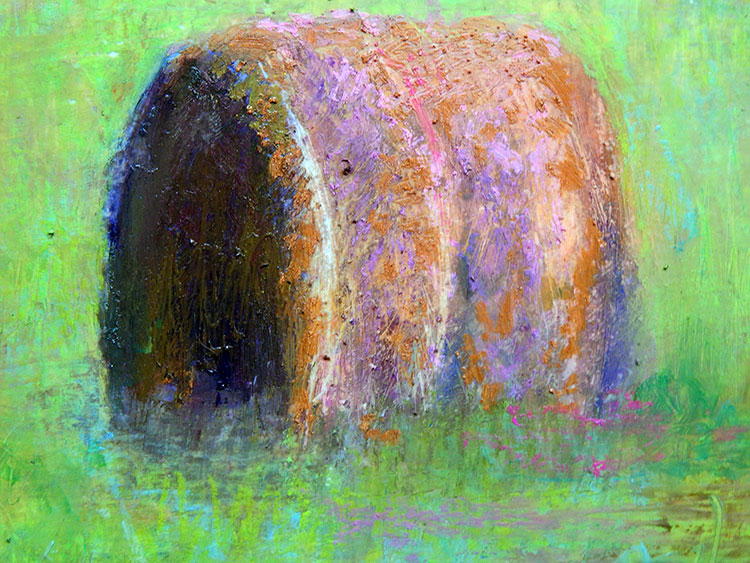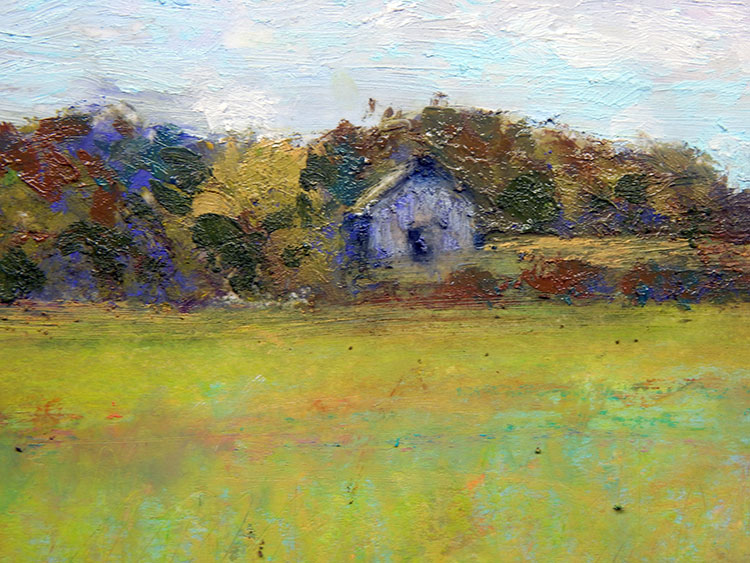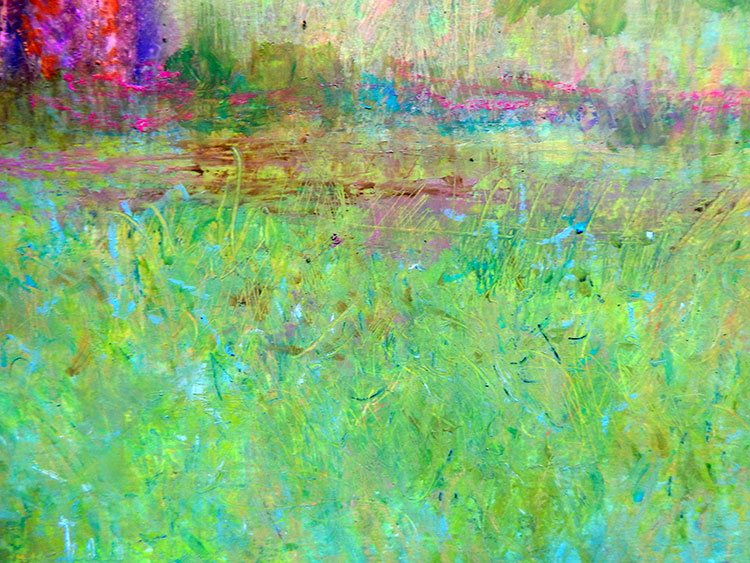Field of Dreams
I've always been a 'field' person. I love the long views we have in Tennessee with the blue mountains protecting our perimeter. The woods are dark and forbidding to a guy with no sense of direction and I get very claustrophobic driving into the mountain 'hollers' we have here. Give me an open field where I can walk, see lots of nature and where I can hear the meadowlarks and see the vultures circling high in the warm air currents.
When it comes to making a painting, though, fields pose a number of problems. They take up alot of room in the landscape, which gives the artist the challenge of making a field interesting and not just a big bunch of green. There needs to be something of interest in the foreground to capture the viewers interest and to lead you into a painting. You don't need a bunch of dead space there, where the background becomes the only design element of interest.

Making Hay
Hay bales seem very attractive to me in our landscape. They give a sense of scale and distance and provide a design feature and a chance to show the light of the day. In this painting, I was drawn to the big hay bale in the foreground. Most of the bales had already been carried away, so this one really stood out. Hay bales provide a note of warm color that provides a welcome relief to the prevailing cool colors you often find in the summer landscape. Locating the big foreground bale of hay was critical in the design of this painting. It is not in the center but neither is it too close to the edge of the composition. The shadow of the hay bale provides a subtle way to push your eye towards the right hand side of the painting and improve the balance of having the bale leaning towards the left side.

Portrait of a Field
I see many paintings that 'generalize' the landscape in a way that makes it very uninteresting. Every field is different. What kind of grasses are growing there? Are there wildflowers that indicate the time of year and provide notes of color? Are there subtle colors and textures you can take advantage of? These specifics give your landscape painting a sense of authenticity. Our brains are very amazing. Give us a few indications and our brain will fill in the rest of the story, giving it our own unique spin!

Textures
I worked hard trying to make this field visually interesting. I first laid in a thin layer of bright yellow color that I spread out with a palette knife leaving it quite transparent. On this foundation I put in layers of green in a hatching technique that I often used in pastel painting. The yellow foundation helps give the field a 'glow' from within. I lightly scratched into the surface with various tools as well to expose lower layers of paint. As the paint tacked up , I added warm orange and pink grasses that help knock down the prevalent green tones. They were 'there' in the landscape, but I exaggerated them to improve the warm/cool balance. I gently dragged these warmer tones over the nearly dry surface which gives a shimmering 'dry brush' effect. I used the palette knife to apply thicker paint on the hay bale. These textures give relief to the larger expanse of smoother passages in the painting.

Background Information
In this painting, the background details play a large part in making this painting work. I spent much time building up more textures and details in the trees, sunlit fields and sky. All this 'busyness' provides a balance to the field which takes up nearly three quarters of this composition. The dark values in the trees provide more depth and strength to the color. The horizon line lies on the one third grid of the 'golden section' a classic trick to provide stability to a composition. In the end, all these contrasts that I created in this painting help create what I hope to attain in my paintings....a ' magic balance' of color and design.

